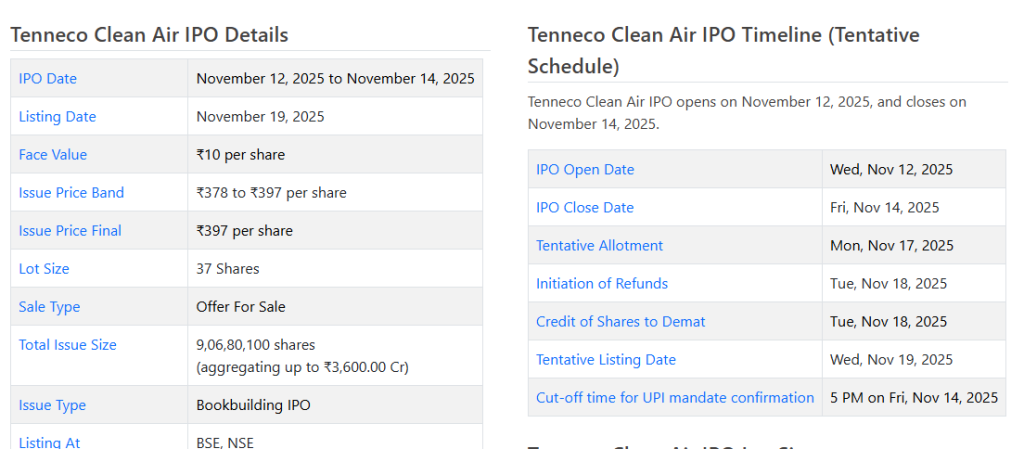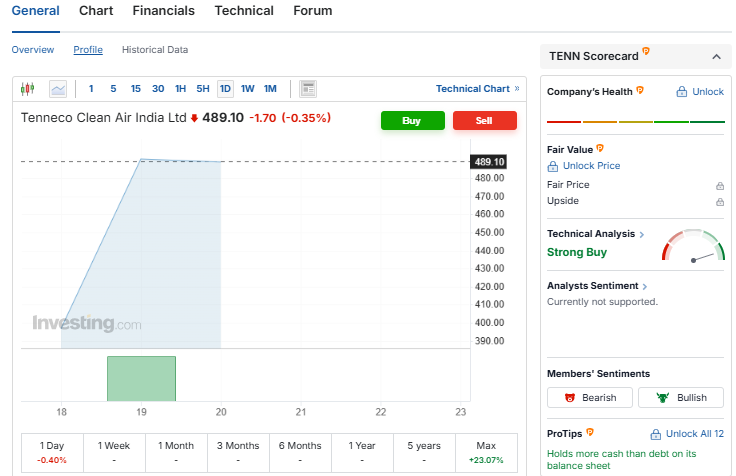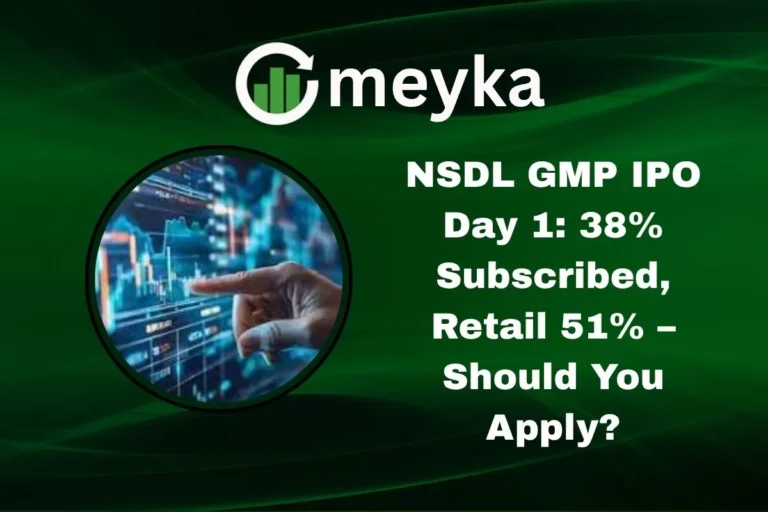Tenneco Clean Air: Stock Debuts With Over 27% Premium on Listing Day
Tenneco Clean Air made headlines on its listing day on 18 November 2025, when the stock jumped more than 27% above its issue price. This strong debut surprised many market watchers. It also showed how fast investors are shifting toward clean-mobility and emission-control companies. The demand for cleaner engines, lower emissions, and strict global rules has pushed this sector into the spotlight.
Tenneco Clean Air enters the market at a time when automakers face tough pressure to meet new environmental standards. The company builds systems that help vehicles reduce harmful gases. These products are now essential for carmakers in the U.S., Europe, and Asia. That is why investors reacted with so much confidence on day one.
The listing also marks a fresh phase for Tenneco’s business strategy. It allows the Clean Air division to grow with more focus and independence. The strong premium shows trust in its long-term potential. It also signals that clean-technology companies may continue to gain market attention in the coming years.
Company Background and Why It Was Listed?
Tenneco Clean Air builds emission control and powertrain products. The business supplies mufflers, catalytic converters, and systems that cut vehicle emissions. It operates worldwide and sells to major automakers. The Clean Air unit was carved out to sharpen focus on emission tech. The parent group restructured after a strategic investment from Apollo Fund X and partners in April 2025. That move set the stage for a market listing as a separate public company.

The IPO aimed to unlock value for investors and give the division independence. The public sale in India was an offer for sale (OFS) by existing shareholders. No fresh equity was raised for the business in this issue. Market watchers saw listing as a test of investor appetite for clean-mobility supply chains.
IPO Timeline and Subscription Details

The public issue opened on November 12, 2025, and closed on November 14, 2025. The company finalized allotment on November 17, 2025. Retail and institutional interest was strong. Overall subscription crossed 60 times. The Qualified Institutional Buyers (QIB) segment was heavily oversubscribed, signaling large investor demand ahead of listing.
Listing Day Performance and Market Reaction
Shares debuted on November 19, 2025. The stock is listed at around ₹505 on the National Stock Exchange. That was roughly a 27% premium to the issue price of ₹397. The initial jump reflected strong listing demand and high grey market premiums in the run-up. However, the stock later showed early volatility and trimmed gains within the first trading hours. This quick flip from enthusiasm to profit-taking is common for hot listings.

Trading volumes were elevated on day one. Buyers and short-term traders pushed prices higher at open. Some long-term investors waited for post-listing stability. Analysts noted that a steep first-day rise often leaves valuation stretched unless business fundamentals back future growth.
Key Drivers Behind the Strong Premium
Investor interest came from several angles. First, the global push for cleaner vehicles raised demand for emission-control parts. New rules in many markets force automakers to adopt tighter emission standards. This trend boosts the addressable market for companies like Tenneco Clean Air. Second, the IPO structure attracted institutional money. The high QIB subscription rate signaled confidence in future cash flows. Third, the company’s existing customer base of global OEMs gave the listing credibility. Long contracts and scale make future revenue more predictable.
Grey market data and broker reports also fed listing optimism. Traders had been pricing a healthy listing premium before November 19. That momentum helped lift demand at the open. Still, market sentiment can turn fast if macro conditions change or if early trading shows weakness.
Business Model and Competitive Strengths
Tenneco Clean Air earns revenue by designing and making emission-control hardware. The firm benefits from scale and long relationships with carmakers. Large production footprints help lower unit costs. The product set is not easily replaced by small competitors because of technical standards and certification needs. Research and engineering capability matters here. That makes the business defensible. The company also invests in cleaner powertrain technology as automakers shift to hybrid and cleaner internal combustion platforms.
Sustainability credentials matter to buyers and regulators. Being able to meet stricter tailpipe norms keeps the firm in demand across markets. Those structural tailwinds make the core business attractive for long-term investors.
Risks and Near-term Challenges
The auto industry is cyclical. A slowdown in vehicle demand will hit suppliers first. The rise of full electric vehicles (EVs) is another variable. Pure EVs use fewer traditional emission parts, which could reduce long-term demand for some products. Competition is intense. Global suppliers and nimble local makers can pressure margins. Raw material costs, like steel, can rise quickly and squeeze profits. Finally, initial listing premiums often correct. New investors must judge if current prices reflect realistic growth expectations.
Analysts’ Take and Market Outlook
After listing, the broker notes highlighted both opportunity and caution. Some analysts praised the company’s margins and client mix. Others flagged valuation after the 27% debut. Early coverage pointed to a mixed short-term view: positives for cash flow quality and risks from sector change. For the medium term, expansion in emission regulation and replacement markets in emerging economies could support sales. Keep an eye on quarterly results and order flows to validate growth claims.
An AI tool used by some equity desks flagged the IPO’s high institutional interest as a bullish signal. That said, models also note the sensitivity of supplier profits to changes in vehicle production volumes.
Investor Considerations and Strategy
For investors, the choice depends on the horizon. Short-term traders might target listing volatility. Long-term buyers should assess structural demand for emission systems over the next five to ten years. Watch for order wins, margin trends, and how the company navigates the EV shift. Monitor share liquidity and any insider selling after the lock-in period. Valuation metrics post-listing will guide whether the premium is deserved.
Closing Note
The Tenneco Clean Air listing on November 19, 2025, delivered a sharp market debut. The 27% premium reflected strong demand and sector tailwinds. Yet the business faces real challenges from industry cycles and technology shifts. Future returns will depend on execution, new contracts, and how quickly automakers move to cleaner powertrains or full EVs. Investors should balance excitement with careful analysis of fundamentals and valuation.
Frequently Asked Questions (FAQs)
Tenneco Clean Air was listed at a 27% premium on 19 November 2025 because the IPO had strong demand. Investors expected steady orders and growth in emission-control products.
The stock may be worth watching, but decisions depend on price trends and earnings after November 2025. Investors should check valuation, market conditions, and risks before buying.
The stock may face risks from slow auto demand, rising EV use, and raw material costs. These factors can impact sales and profits over the next several months.
Disclaimer: The content shared by Meyka AI PTY LTD is solely for research and informational purposes. Meyka is not a financial advisory service, and the information provided should not be considered investment or trading advice.






